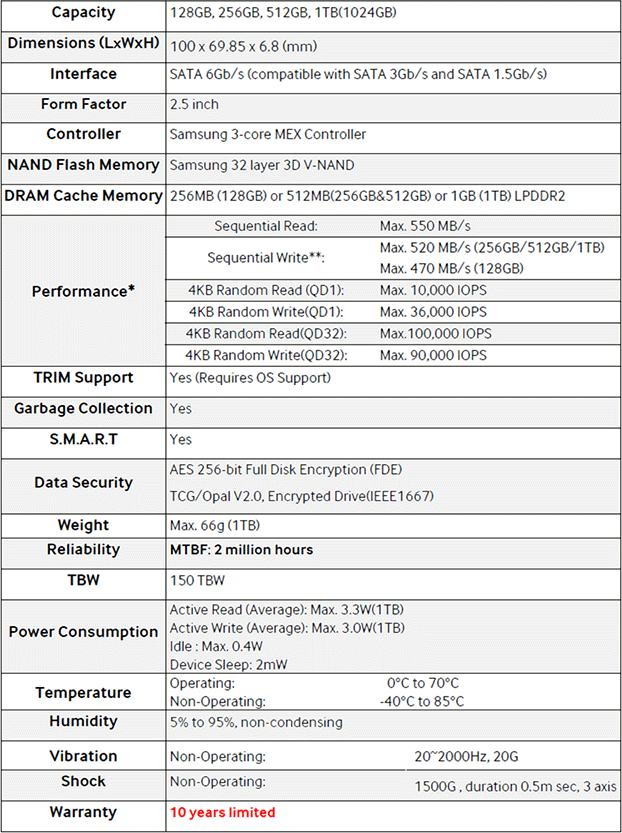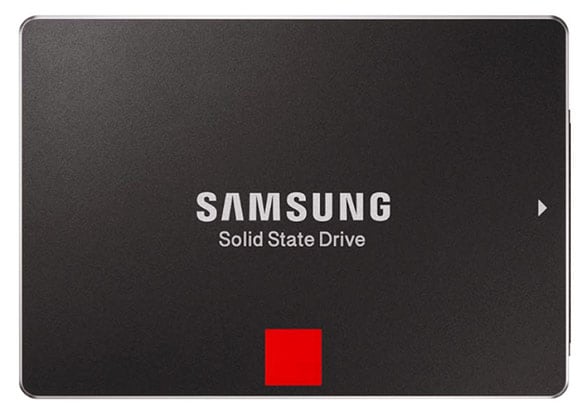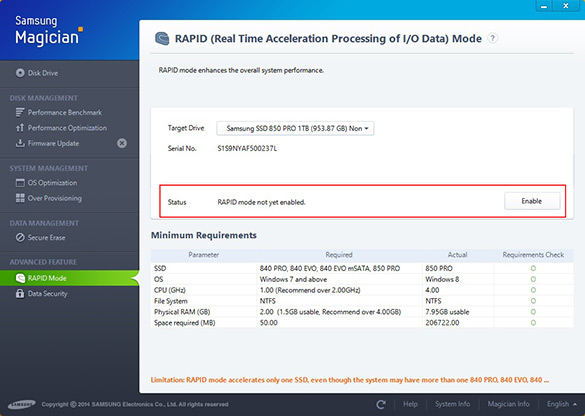Samsung SSD 850 Pro - 3D NAND Arrives
Introduction and Specifications
In the past few weeks, we’ve seen a steady stream of new solid state drive releases, from the likes of Plextor, Crucial, and SanDisk. Our review of the Plextor M6M mSATA drive can be found here, and we covered Crucial’s MX100 series here. And reviews of some new SanDisk drives are currently in the works. Today, however, Samsung is unveiling something new we think you'll really take interest in.
Up next for your reading pleasure, we have Samsung’s brand-new SSD 850 PRO series. The 128GB and 1TB Samsung SSD 850 PRO drives we’ll be showing you here are the company’s latest flagship solid state drives, targeted at client applications. Like the previously-released SSD 845 EVO series, the 850 PRO leverages Samsung’s MEX controller, but these drives are also packing bleeding-edge 32 layer, stacked, 3D V-NAND flash memory that purportedly offers better power, endurance, and performance than traditional MLC NAND.
Take a look at the full specifications below and then we’ll dive a bit deeper into the specifics and see just how the drives perform…
|

Find the Samsung SSD 850 PRO @ Amazon Starting at $129.99
From the outside, Samsung’s new SSD 850 PRO drives look just like most other 2.5” solid state drives currently on the market. They conform to the same 2.5-inch form factor as most other consumer-class drives and feature a basic, metal enclosure with Samsung’s logo emblazoned on the top, and serial number and other identifying information on the bottom.
The drives feature a 7mm Z-Height, and are secured using a trio of pentalobe screws, which are more obscure than the typical Torx or even Hex screws used on most other drives. Should you have the necessary tools to open one of Samsung’s new drives up, however, you’d see that even these relatively svelte 7mm, 2.5” enclosures are way bigger than they need to be.
The guts of the two drives you see pictured below are for the 128GB and 1TB versions. As you can see, the PCB for the 128GB drive barely fills 1/3 of the enclosure. And the 1TB is not all that much bigger.
Both of the drives feature an updated, triple-core Samsung MEX controller, which we believe operates at 400MHz like the 840 EVO series. The controller is fundamentally similar to the triple-core MDX controller used in the original 840 series, though the MDX controller operated at only 300MHz. The 850 PRO’s MEX controller has also been updated to support the SATA 3.1 spec, which incorporates a few new features, like support for queued TRIM commands, for example.
Alongside the controller, all of the Samsung 850 PRO series drives will feature some LPDDR2-1066 DRAM cache memory; the 128GB drive has 256MB of cache, the 256GB and 512GB drives have 512MB, and the 1TB drive has 1GB of cache.
All of the Samsung 850 PRO drives are also outfitted with cutting-edge three-dimensional (3D) Vertical NAND (V-NAND) flash memory. A few months back, Samsung announced that 3D V-NAND had begun mass production, and it has since found its way into these drives. Samsung's 3D V-NAND is current offered in a 128 gigabit (Gb) density in a single chip. It utilizes the company's proprietary vertical cell structure based on 3D Charge Trap Flash (CTF) technology and also uses vertical interconnect process technology to link the 3D cell array. By employing both of these technologies, Samsung's 3D V-NAND is able to provide over twice the scaling of 20nm-class planar NAND flash, according to Samsung’s data. Samsung didn’t disclose which process tech was being used to manufacture the NAND, but they were keen to talk about endurance and power. Samsung is upping the endurance rating on the SSD 850 PRO series to 150 TBW and offering a full 10 year warranty on the drives. That’s impressive for a consumer-class product. The Samsung SSD 850 PRO also supports “Device sleep” (DEVSLP), which can maximize battery life in mobile devices. All told, the Samsung SSD 850 PRO series of drives should offer better performance, endurance, and power than previous-gen SSDs.
Like Samsung’s 840 series solid state drives, the new 850 PRO also supports RAPID mode. RAPID is an acronym for Real-Time Accelerated Processing of I/O Data. It is a feature of Samsung’s Magician software (v4.4 or newer with the 850 PRO) that can speed up the drive significantly and can be enabled with a single-click (followed by a reboot).
Samsung acquired NVELO a while back, which was a company known for its SSD caching technology. NVELO’s software was used to accelerate hard drive transfers by buffering the most commonly accessed bits of data from the hard drive onto a faster SSD. Well, RAPID works in a similar manner, but in the case of the Samsung 850 PRO series of drives, RAPID caches the most commonly accessed bits of data on the SSD into faster system memory. The size of the cache will dynamically adjust based on available system resources (up to 4GB on systems with 16GB of RAM). It also follows the cache flush commands of the OS, so the risk of losing data due to an unexpected power outage isn’t much higher than a typical system using write buffering. The algorithms for RAPID are specifically tuned for solid state transfers, however, and are far more effective than any current-gen OS cache. On the pages ahead, we’ve tested the 1TB drive with and without RAPID where applicable, and as you’ll see, it can have a major impact on performance.











